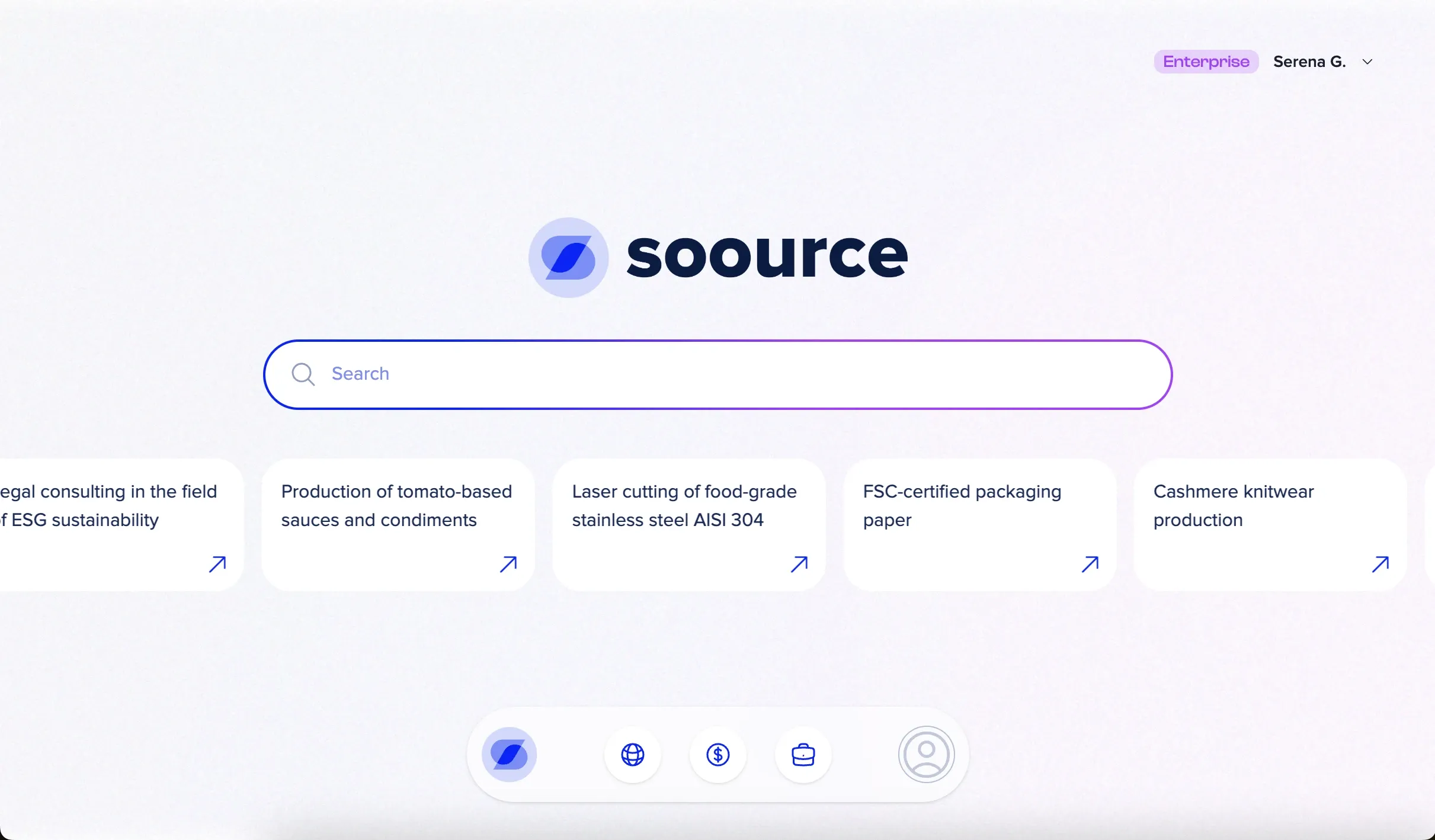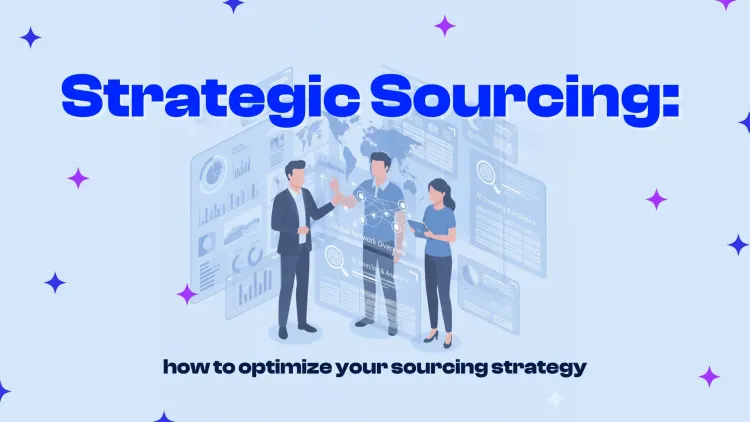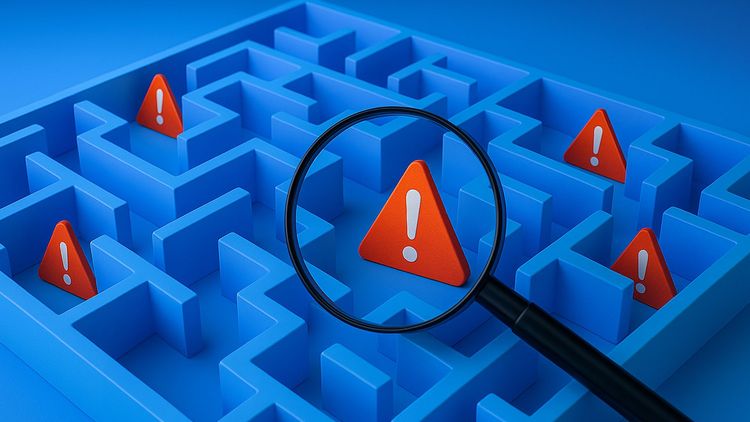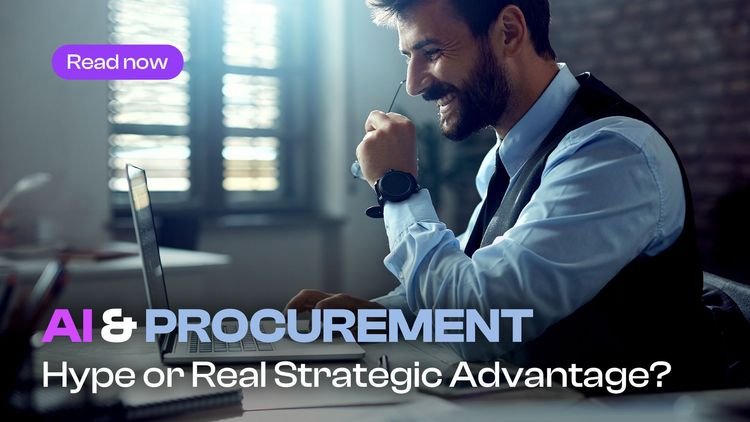5 ways Smart Procurement drives Sustainability
28/4/2025
•4 MIN READ
Procurement is no longer just about price and delivery: it’s about purpose.
As ESG expectations intensify, procurement is stepping into a new role: not only managing spend and risk, but also actively contributing to corporate sustainability goals. The convergence of technology, regulation, and stakeholder demand is creating a unique opportunity for procurement to lead sustainability transformations across the value chain.
The challenge? Delivering on ESG commitments without disrupting operations or inflating costs.
The solution? Intelligent procurement tools and strategies that embed sustainability into every sourcing decision.
Here are five ways that smart procurement is already driving measurable sustainability outcomes in leading organizations.
1. Align Spend with ESG Objectives
99% of companies today have formal ESG goals, and 80% already include mandates to work with certified sustainable suppliers (Amazon Business, 2025). This signals a clear shift: ESG is now a procurement KPI, not just a compliance requirement.
However, the gap between intent and execution is real. Managing ESG compliance across thousands of vendors, regions, and categories remains a complex task—especially without digital support.
Modern procurement platforms streamline this process by mapping supplier data against sustainability frameworks and certifications (e.g., EcoVadis, ISO 14001, B-Corp). Teams can filter by ESG tags, surface pre-qualified vendors, and even embed sustainability scoring into approval workflows.
The result? Procurement can operationalize ESG goals without slowing down purchasing cycles or increasing administrative burden.
2. Take the Lead on Scope 3 Emissions
Scope 3 emissions (those produced by suppliers, logistics partners, and product end-users) often account for over 70% of a company’s total carbon footprint. They’re also the hardest to measure and reduce.
That’s changing quickly. According to PwC’s 2024 survey, the number of companies using or testing CO₂ tracking tools rose from 27% to 51% in just one year. High-impact industries like professional services (87%), aeronautics & defense (77%), and chemicals & metals (69%) are leading the way.
More importantly, reducing Scope 3 emissions is now the #1 ESG priority for procurement departments over the next three years.
Smart procurement tools are critical here. They help organizations gather carbon data directly from suppliers, track emissions by category or project, and benchmark results across the supply base. AI-based solutions can even flag high-emission suppliers and suggest greener alternatives, transforming carbon data from a reporting headache into a strategic asset.
3. Increase Control, Reduce Rogue Spend
Sustainable sourcing begins with visibility. Without a centralized view of who’s buying what—and from whom—procurement teams risk non-compliance with ESG standards, budget overspend, and reputational risk.
That’s why controlling “rogue” or unauthorized spend is essential. According to Statista (2024), 41% of procurement leaders highlight the elimination of rogue spend as a key benefit of adopting e-procurement platforms, particularly in indirect categories like maintenance, repair, and operations (MRO).
Smart procurement systems address this by embedding ESG policies into sourcing workflows—filtering non-compliant vendors, enforcing pre-approved supplier lists, and auto-flagging purchases that fall outside sustainability criteria.
This doesn’t just reduce waste, but it builds a procurement culture of accountability and impact, where every transaction contributes to broader environmental and social goals.
4. Unlock Local and Diverse Supplier Value
Small, local, and diverse suppliers are often overlooked, but they play a big role in building sustainable and resilient supply chains. They reduce lead times, support community development, and often come with smaller carbon footprints.
The data backs this up. Amazon’s 2025 State of Procurement report shows:
- 61% of organizations prioritize suppliers with sustainable practices
- 46% prefer sourcing from local businesses
- 44% are focusing on certified small or minority-owned businesses
Despite this momentum, the top barrier to ESG-aligned sourcing is “difficulty identifying qualified suppliers”.
AI-powered sourcing platforms are helping bridge this gap. By scraping public registries, sustainability directories, and vendor portals, these tools can instantly match buyers with certified ESG vendors—saving time, ensuring compliance, and expanding the supplier base.
Organizations that proactively support smaller and greener suppliers also gain flexibility during disruptions, reduce Scope 3 emissions, and improve their ESG performance across multiple dimensions.
5. Build Sustainability into Every Vendor Relationship
Sustainability shouldn’t be limited to quarterly reports. It belongs in every RFP, contract, and supplier conversation.
That means ESG metrics need to be embedded in how supplier performance is defined and measured.
Leading procurement teams are now:
- Including ESG scoring and certifications in RFP evaluation criteria
- Requiring carbon disclosure and compliance data during onboarding
- Using total impact metrics (not just total cost) to guide sourcing decisions
Procurement tools are evolving to support this shift—automating supplier scorecards, consolidating ESG data, and aligning purchasing behavior with corporate sustainability frameworks like CSRD or GRI.
In short, procurement is no longer just about price efficiency. It’s about impact efficiency.
Putting It Into Practice: A Closer Look at Technology in Action
Turning strategy into action requires the right tools. Let’s explore how Soource empowers procurement teams to scale ESG efforts without scaling complexity.
Soource empowers procurement teams to scale ESG efforts without scaling complexity.

Soource’s AI-powered scouting engine makes it easy to identify and reach out to potential suppliers who may align with your sustainability goals. Through automated, customizable email workflows, with Soource you can request key ESG-related information directly from vendors, such as:
- Environmental certifications
- Social and diversity credentials
- Regulatory compliance documents
The responses are then automatically read and analyzed by the system, giving your team a consolidated view of each supplier’s ESG profile, without manual follow-up or data entry.
This process helps you expand your supplier base, gather relevant compliance data, and track ESG progress, all while saving time and staying cost-efficient.
Whether you’re working toward Scope 3 emissions reporting, preparing for ESG disclosures, or aiming to build a more sustainable supply chain, Soource gives your procurement team the real-time visibility and data agility needed to move from intention to action.
With the right tools, procurement can move beyond compliance to become a driver of innovation, brand value, and long-term growth.
If you're curious to know how your business can benefit from smart procurement, book a demo to see Soource in action.
Grab your spot
FAQ
We have collected the most frequently asked questions here, but don't hesitate to contact us if you have any doubts or want to know more about Soource.
Is Soource compatible with my ERP (Enterprise Resource Planning or Procurement Suite)?
Yes, Soource is compatible with major ERP and procurement software like SAP Ariba, Jaggaer and other enterprise systems. You can integrate it for bidirectional data exchange or use it as a plug & play solution, without the need for integration.
Are my data on Soource protected and secure?
Absolutely. All corporate, personal and supplier data remains your property and is processed according to GDPR and European regulations. Generic data is anonymized to improve platform and Soource community performance.
Where does supplier data on Soource come from?
Soource's database combines:
- Certified and public sources
- Data collected from intelligent web crawling
- Information automatically extracted from corporate emails
Today Soource offers the largest database of Italian companies with direct email contact.
Can I attach files to RFI, RFQ or RFP on Soource?
Yes, you can attach documents in any format to your requests (RFI - Request for Information, RFQ - Request for Quotation or RFP - Request for Proposal). In particular, for RFIs, it is recommended to include a technical specification sheet of the product to get more detailed responses from suppliers.
Can I send follow-ups to suppliers with Soource?
Yes. With Soource you can filter suppliers who haven't responded and send a mass follow-up in one click. This helps you double the response rate, up to 80% on average, improving RFI, RFP and RFQ management.
Is Soource compliant with the European AI Act?
Yes. Soource's artificial intelligence is compliant with the European Union's new AI Act, falling into the zero-risk category, as it only supports internal activities and does not automate outward processes or critical decisions.
Why use Soource for RFI and RFP?
With Soource you can:
- Create RFI (Request for Information) and RFP (Request for Proposal) in just a few clicks
- Send them automatically to selected suppliers
- Analyze responses with artificial intelligence
- Extract and compare certifications, availability, technical capabilities
You save time and identify the best suppliers more quickly.
Can I also use Soource for RFQ?
Yes. Soource also supports RFQ (Request for Quotation) to request economic offers. The platform automates:
- RFQ sending
- Response reception and reading
- Comparison of prices and conditions


